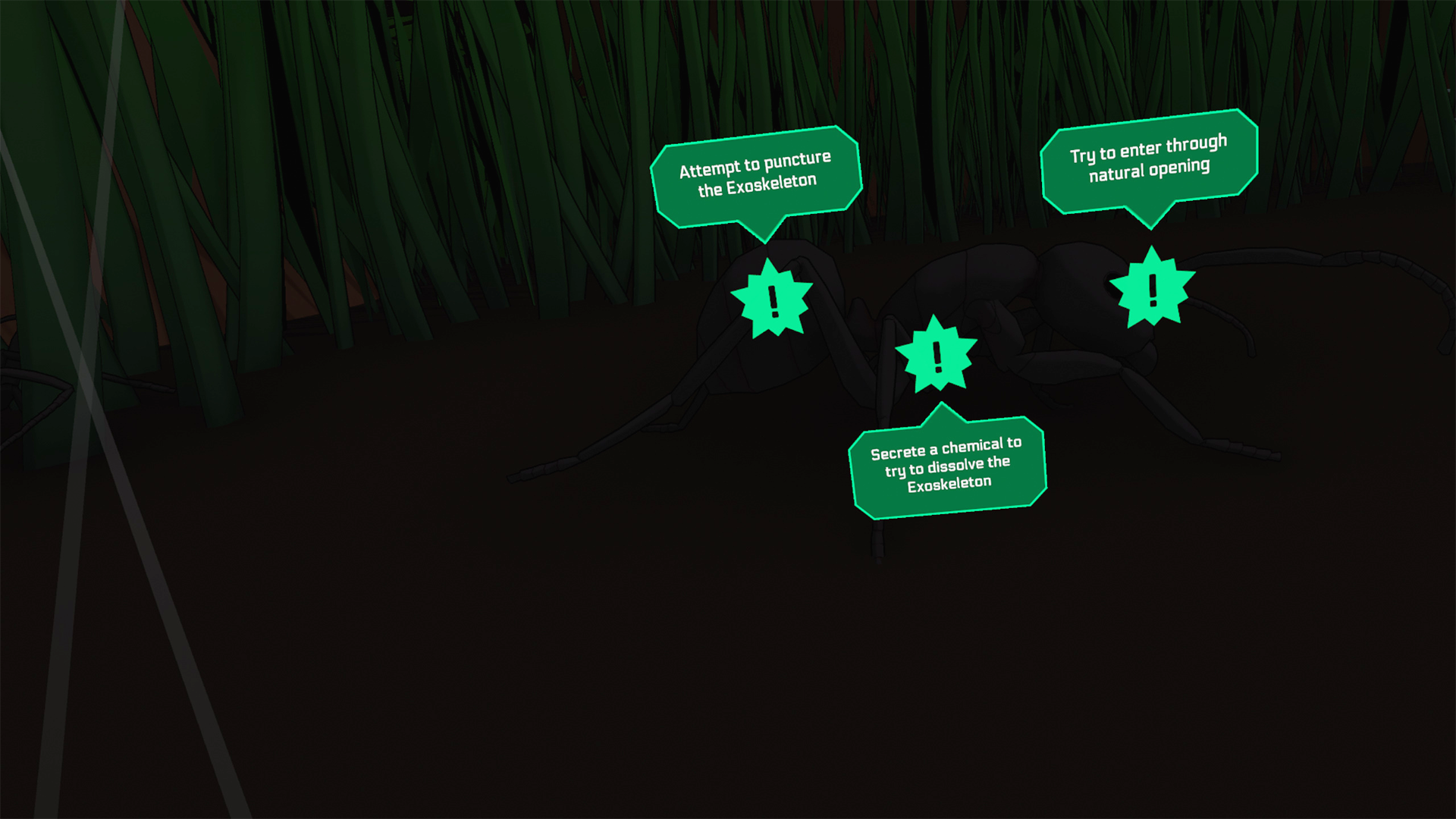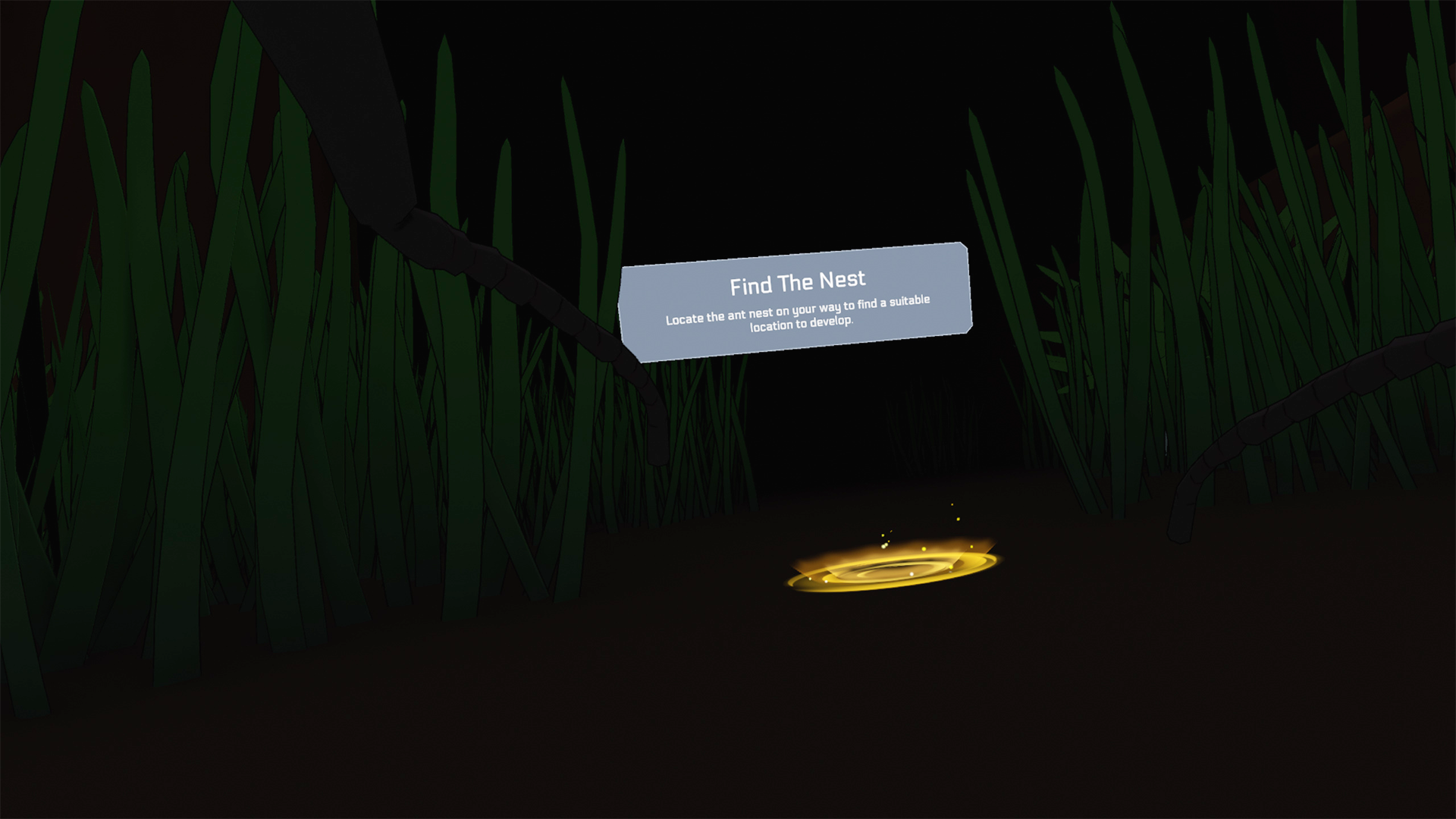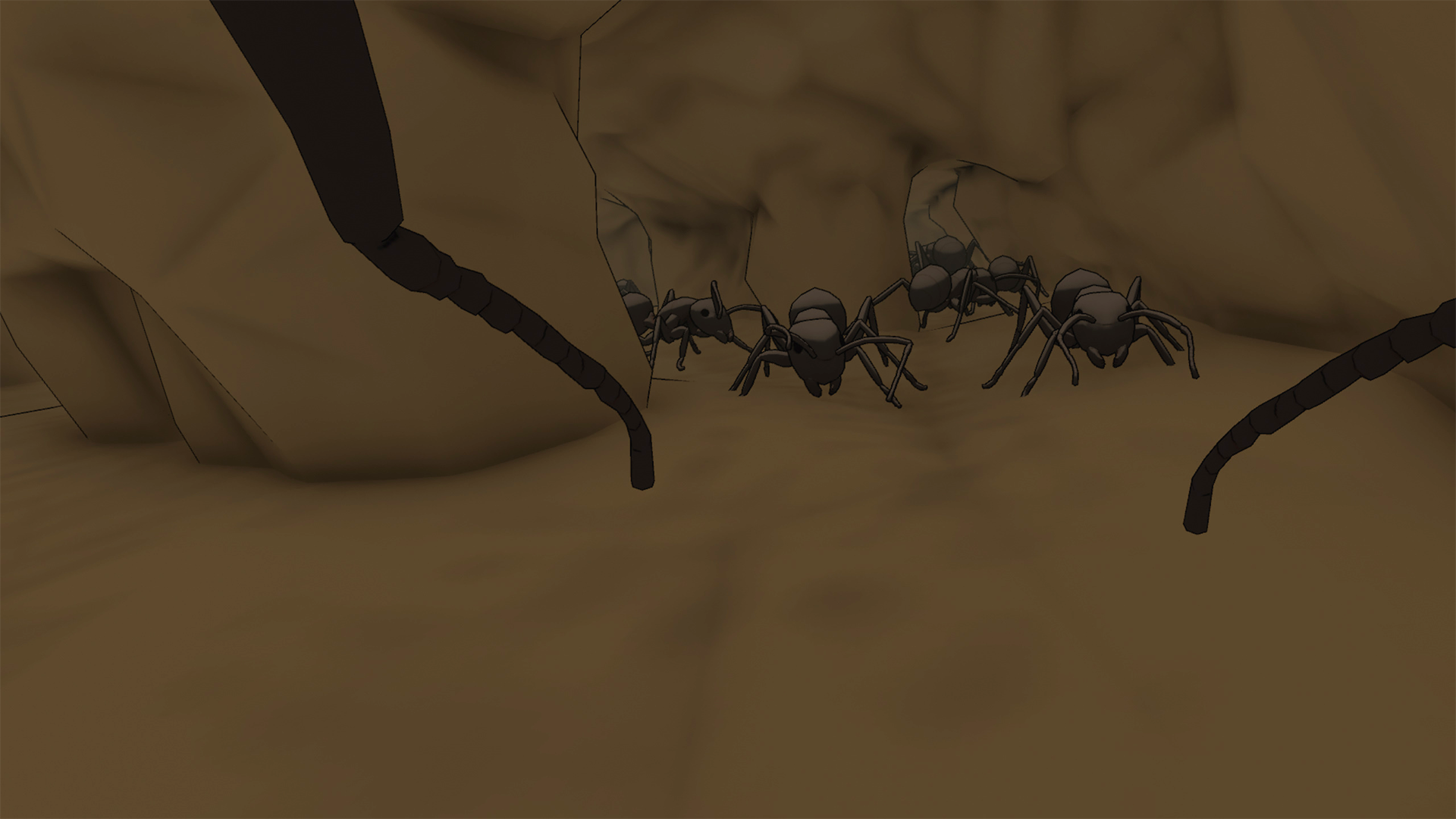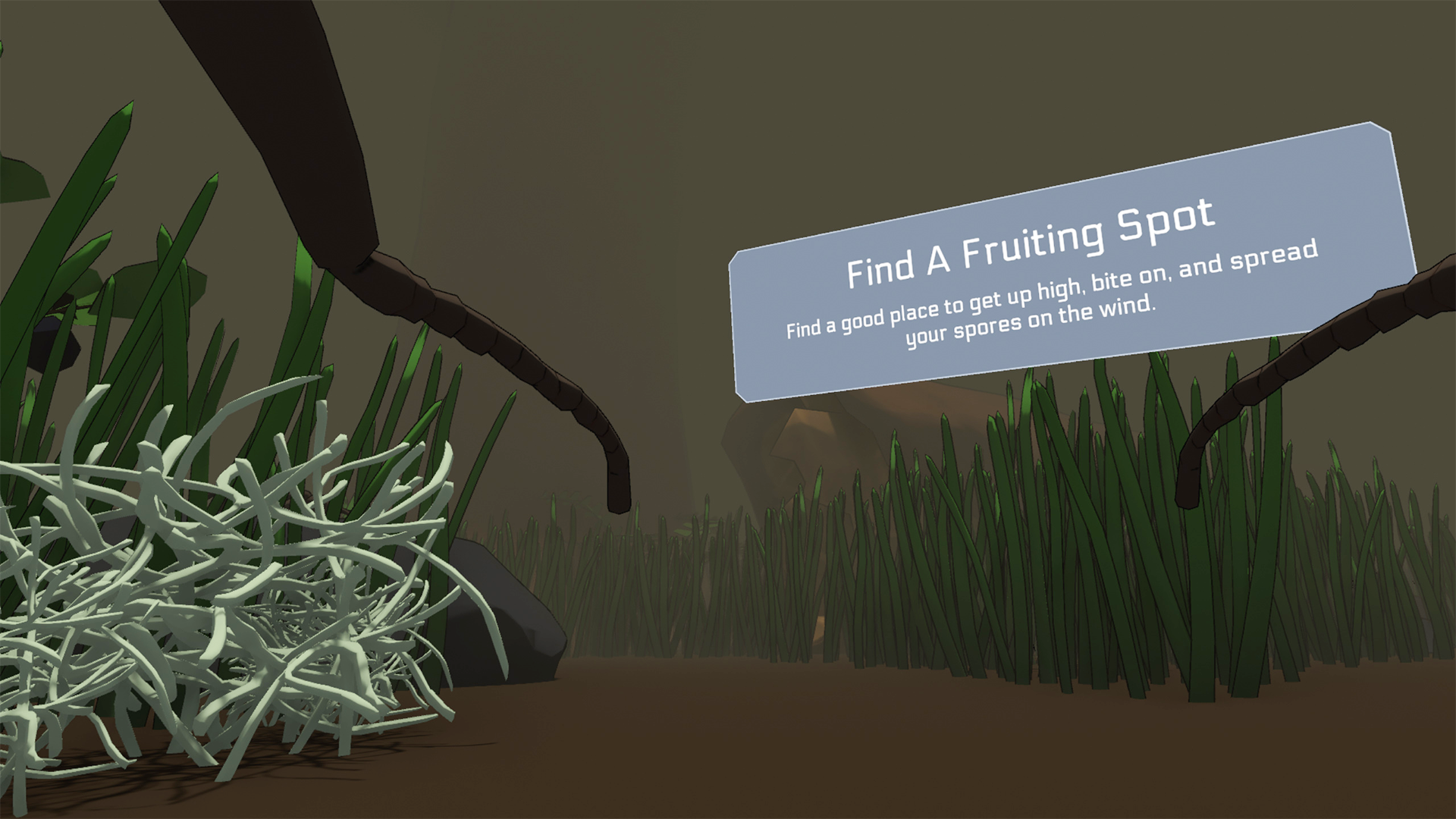Zombie Ants VR is a cross-platform VR project designed to expose teens to the life cycle of Ophiocordyceps in ants.
FORMAT
Engine
Unity 2021
Team Size
1 Core Developer (me)
3 Shorter Term Contract Developers
Separate 9 Developers On An Initial Exploratory Prototype Team
Development Time
Two Years (Part Time)
ROLES & TASKS
Producer / Project Manager
Assigning, managing, and approving the tasks and priorities of all additional developers working on the final game team across Jira and Discord
Communicating with the SMEs to validate content goals and advocate for the end player’s perspective
Running a large scale playtest at Otronicon 2022 to gather player feedback
Game & UI Designer
Translating SME notes into a concrete step-by-step gameplay structure
Creating an Adobe XD interactive experience to let the SME preview what the end goal flow would look like ahead of starting development
Designing simple mini-games to represent spores landing on ants and guard-ant inspections
Researching and designing UI that works well in VR
Creating a UX that prioritizes new VR users, simple forward progress, and learning by choosing key alternate input methods, putting tutorialization first, and providing additional real world context for your behaviors whenever possible
Technical Designer
Implementing all input across a plethora of input methods in several different input types (walking, falling, climbing, interacting with menus)
Developing various key systems (audio, lighting, level streaming, multi-input settings, game events, death and respawning)
Researching, implementing, and integrating various optimization techniques to improve VR performance as much as possible given strict design and art requirements
Researching, implementing, and integrating various anti-motion sickness methods to improve UX
STORIES
The project began with a request from a Game Design professor and a Biology professor asking for anyone to continue a prototype VR project designed to teach teens about the life cycle of Ophiocordyceps in ants now that the project had received grant funding. After reviewing what the previous team of students had done and the design goals of the SMEs I decided to scrap the tech and design in place and start from the beginning with just the art assets and a loose stage structure. Part of the motivation for this was to move the perspective from a floating third person perspective into the perspective of the spore and the ant to take advantage of the visceral experience of being in VR. In doing so I was able to make a much more robust technical framework that took anti-motion sick principles in mind and make an experience that everyone can enjoy from VR enthusiasts to first time VR users.
This being my first time both working in and playing VR, I spent a lot of time researching what current VR standards are and best practices for developing in VR including movement, UI, and optimization.
One notable challenge working on this project was the fundamental struggle of constantly changing scenarios for gameplay and a single gameplay loop to tutorialize it. It meant all gameplay had to be relatively simple and intuitive and all specific tasks had to be tutorialized both at a conceptual level (what does this represent in real life?) and a literal level (what controls do you use, described generically enough to apply to both Oculus Quest 2 and Vive).
I decided relatively early on that of I was going to be shifting the perspective to first person and reworking the game to accommodate that, I wanted to make sure the game had no loading screens to best suit the VR format and encourage the immersive feeling. This meant a good deal of additional time had to be put into smart level streaming including updating audio, lighting, and NPCs while also taking into account player deaths.







